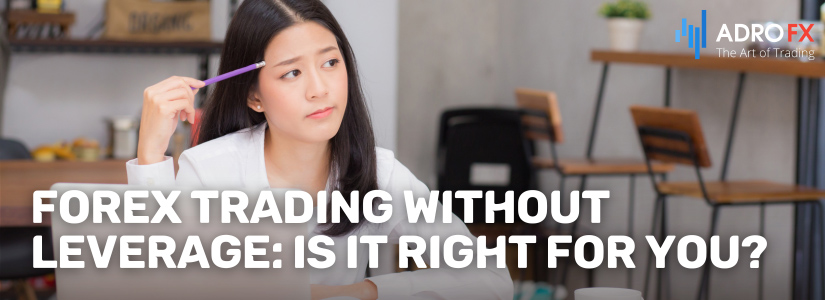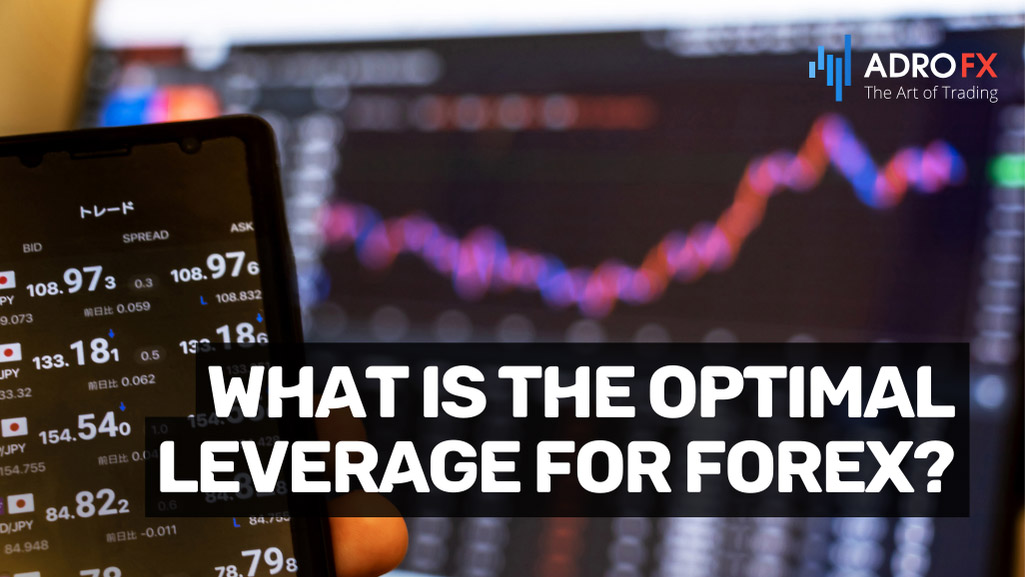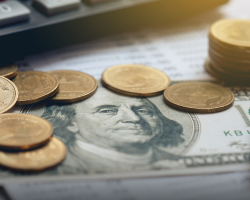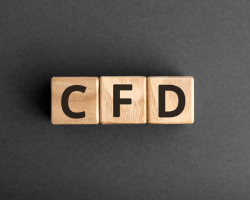Forex Trading Without Leverage: Is It Right for You?

Trading forex with or without leverage poses a critical question for every aspiring investor embarking on their trading journey.
In a market boasting over 5 trillion dollars in daily transactions, forex trading stands out as an enticing avenue for potential wealth accumulation, offering the prospect of not just financial gain but also sustainable livelihoods.
However, the decision to utilize leverage adds layers of complexity, presenting traders with both opportunities and pitfalls. While leverage amplifies trading potential and profit margins, it also entails significant risks, responsibilities, and inherent drawbacks. Conversely, opting to trade without leverage necessitates certain prerequisites in terms of available capital and risk tolerance.
In this discourse, we delve into the enigmatic world of leverage in forex trading—a tool that can serve as a potent elixir for some while proving to be a toxic brew for others. We unravel the essence of leverage in forex, exploring its merits and demerits, strategies for prudent management, and the optimal leverage levels for traders. Furthermore, we examine the rationale behind trading without leverage.
Before delving into the nuances, it's imperative to grasp the fundamental concept: What exactly is leverage?
What is Leverage?
Understanding leverage is vital for traders navigating the forex market. Leverage essentially refers to the ability to control a large market position with a relatively small amount of capital. It acts as a multiplier, amplifying both potential gains and losses.
To illustrate, consider a scenario where a trader aims to execute a $100,000 trade in the forex market. Without leverage, the trader would need the entire $100,000. However, with leverage, they can control this $100,000 position with only a fraction of the total value, known as margin. For instance, if the broker offers a leverage ratio of 1:100, the trader would only need to deposit $1,000 (1% of $100,000) as margin to control the entire $100,000 position. This means the trader is leveraging their capital by a factor of 100.
While leverage enhances the potential for significant gains by allowing traders to control larger positions, it also magnifies the potential for losses. It's essential to recognize that leverage amplifies both gains and losses, making it a double-edged sword in forex trading.

How Does Leverage Work?
Now that we understand what leverage is, let's delve into how it works in practice within the forex market.
Leverage works by allowing traders to borrow funds from their broker to control larger positions than what their initial capital would typically allow. This borrowed capital, known as margin, acts as collateral for the leveraged trade.
When a trader decides to utilize leverage, they deposit a certain amount of margin with their broker, usually a percentage of the total position size. The broker then provides the remaining funds necessary to open the position.
For example, suppose a trader wishes to execute a $100,000 trade with a leverage ratio of 1:100. In this scenario, the trader would need to deposit $1,000 (1% of $100,000) as margin with their broker. The broker would then lend the trader the remaining $99,000 to control the full position size.
As the trade progresses, any gains or losses are calculated based on the total position size, not just the initial margin deposited by the trader. This means that even small movements in the market can result in significant gains or losses relative to the trader's initial investment.
It's important to note that while leverage amplifies potential yields, it also magnifies potential losses. If the market moves against the trader, losses can exceed the initial margin deposited, leading to margin calls or even the liquidation of the trader's position.
In summary, leverage works by enabling traders to control larger positions in the forex market with a smaller initial investment. However, traders need to understand the risks involved and manage their leverage effectively to avoid excessive losses.
Most Common Leverage Levels
Leverage levels in forex trading typically span from 1:1 to as high as 1:500 or beyond, contingent upon the broker and jurisdiction. Each leverage level denotes the ratio of the trader's own capital to the borrowed funds facilitated by the broker. Let's delve into some prevalent leverage levels and their implications:
- 1:1 Leverage: Also dubbed no leverage, this level signifies traders solely utilizing their own capital for trades. While it minimizes risk, it also restricts potential gains.
- 1:10 to 1:50 Leverage: These levels are commonplace among regulated brokers, presenting moderate leverage. Traders can augment their positions to a certain extent while upholding reasonable risk management.
- 1:100 Leverage: This leverage tier is favored among forex traders, offering a balanced risk-reward dynamic. It enables traders to control significantly larger positions than their initial capital while still maintaining some degree of risk management.
- 1:200 to 1:500 Leverage: Considered high leverage, these levels are often provided by offshore brokers. While they permit traders to manage large positions with minimal capital, they also heighten the risk of substantial losses.
- 1:1000 Leverage and Above: Certain brokers extend extremely high leverage, such as 1:1000 or even 1:3000. Although these levels can amplify potential earnings, they also expose traders to extreme risk and are generally unsuitable for inexperienced traders.
Traders must meticulously evaluate their risk tolerance, trading strategy, and experience level when selecting a leverage level. While higher leverage may promise greater returns, it concurrently escalates the likelihood of significant losses. Hence, leveraging responsibly and implementing robust risk management techniques are imperative.

What is the Optimal Leverage for Forex?
Determining the ideal leverage for forex trading hinges on numerous factors, encompassing risk tolerance, trading strategy, experience level, and financial circumstances. While there's no universal solution, here are some considerations to guide you in determining the most fitting leverage for your trading endeavors:
Risk Tolerance
Gauge your comfort with potential losses and assess your risk tolerance. Lower leverage ratios may be preferable for risk-averse individuals since higher leverage levels magnify both gains and losses.
Trading Strategy
Your trading approach significantly influences the suitable leverage level. For instance, long-term traders inclined to hold positions for extended durations might opt for lower leverage, whereas short-term traders may favor higher leverage to exploit short-term price fluctuations.
Experience Level
Novice traders are generally advised to commence with lower leverage levels to acquire experience gradually. As proficiency and confidence grow, you might contemplate incrementally increasing your leverage.
Financial Situation
Consider your financial standing and the capital available for trading. Higher leverage empowers you to control larger positions with less capital, but it also heightens the risk of significant losses.
Regulatory Constraints
Be mindful of regulatory limitations imposed by your broker or jurisdiction. Certain regulatory bodies impose maximum leverage limits to safeguard retail traders from excessive risk exposure.
Risk Management
Irrespective of the leverage level chosen, prioritize effective risk management. Utilize Stop Loss orders, appropriate position sizing, and diversification strategies to manage risk prudently and safeguard your capital.
Ultimately, the optimal leverage for forex trading aligns with your risk tolerance, trading strategy, and financial objectives. It's essential to meticulously consider these factors and select a leverage level conducive to comfortable trading while responsibly managing risk. Additionally, regularly reassess your leverage utilization as your trading circumstances and market conditions evolve.
Trading Forex Without Leverage
Trading forex without leverage involves buying and selling currencies at a 1:1 ratio, meaning no margin or leverage from the broker is involved. This approach requires using only your own funds for trading, without any additional borrowing.
For example, to trade one standard lot of EUR/USD without leverage, you would need a significant account balance of $100,000. Similarly, trading two or three lots would require $200,000 or $300,000, respectively.
The main drawback of trading without leverage is accessibility. Not everyone has $100,000 in liquid cash to fund their trading account without relying on leverage. However, forex trading isn't limited to standard lots. Many brokers offer mini and micro accounts, allowing traders to operate with smaller lot sizes.
A mini lot, consisting of 10,000 units, would require a minimum account balance of $10,000 to trade GBP/USD without leverage. Likewise, trading micro lots, comprising 1,000 units, would need at least $1,000 in your account.
Now, can you trade forex without leverage? Yes, but it's crucial to consider the available options. While trading in standard accounts with no leverage demands significant capital, mini and micro accounts offer more accessible entry points with lower account balance requirements.
Trading with mini and micro lots provides the opportunity to trade without leverage using less capital. However, it prompts another question: Is it advisable to trade without leverage? Let's explore this further.

Pros and Cons of Trading Without Leverage
Trading forex without leverage, also known as trading at a 1:1 ratio, has its own set of advantages and disadvantages that traders should consider before making their investment decisions.
Pros
- Lower Risk: Trading without leverage significantly reduces the risk of margin calls and potential losses. Since traders are using only their own funds, there is no risk of borrowing money and facing excessive debt in the event of unfavorable market movements.
- Greater Control: Without leverage, traders have complete control over their positions and are not subject to the margin requirements imposed by brokers. This allows for more strategic decision-making and flexibility in managing trades.
- Reduced Stress: Trading without leverage may alleviate some of the psychological pressure associated with leveraged trading. Traders can trade with peace of mind, knowing that their risk exposure is limited to the amount of capital in their account.
Cons
- Limited Profit Potential: Without leverage, traders may miss out on the opportunity to amplify their returns significantly. Since they are only using their own funds, the potential gains from each trade are capped at the amount of capital invested.
- Higher Capital Requirements: Trading without leverage requires a substantial amount of capital to open and maintain positions, especially when trading standard lots. This may pose a barrier to entry for traders with limited funds.
- Reduced Trading Opportunities: Without leverage, traders may be limited in their ability to take advantage of short-term trading opportunities and capitalize on market fluctuations. They may need to hold positions longer to achieve meaningful returns, which can tie up capital and limit trading frequency.
In conclusion, trading forex without leverage offers greater control and lower risk but may limit returns potential and require higher capital investment. Traders should carefully weigh the pros and cons before deciding whether to trade with or without leverage, taking into account their risk tolerance, trading strategy, and financial goals.
Should You Consider Forex Trading Without Leverage?
The question of whether to trade forex without leverage looms large in the minds of many aspiring traders, yet the answer remains elusive. Ultimately, this decision hinges on various factors, including financial standing, risk tolerance, psychological resilience, trading strategy, and investment objectives.
For traders with substantial capital reserves, opting to trade without leverage may hold greater appeal, offering unencumbered trading and potentially higher returns. Conversely, those with limited financial resources may view leverage as a necessary tool to amplify their trading power and maximize returns.
In essence, trading forex without leverage presents a distinct advantage: wielding a smaller sword. However, this approach also entails fewer costs and the prospect of cleaner, more transparent returns.
It's crucial to recognize that leverage itself is not inherently detrimental to trading. When used judiciously, it can serve as a powerful tool for earnings generation and risk management. At certain levels, leverage enables traders to magnify their earnings potential while mitigating exposure to market volatility.
Ultimately, the decision to trade with or without leverage rests on individual circumstances and preferences. By carefully weighing the advantages and drawbacks of each approach and aligning them with trading goals, one can chart a course that best suits their needs in the dynamic world of forex trading.
Conclusion
Navigating the world of forex trading, whether with or without leverage, presents both opportunities and challenges for aspiring investors. With over $5 trillion in daily transactions, the forex market offers promise for financial gain and sustainable livelihoods for those who dare to venture into its dynamic landscape.
Leverage, as a tool to control larger positions with a smaller initial investment, amplifies both potential gains and losses. It empowers traders to capitalize on market opportunities while exposing them to heightened risk. Understanding how to effectively manage leverage is crucial for navigating the complexities of the forex market and safeguarding against excessive losses.
From the most common leverage levels to determining the best leverage for individual trading strategies, traders must carefully consider their risk tolerance, experience level, and financial situation. Responsible risk management techniques, such as proper position sizing and the use of Stop Loss orders, are essential for mitigating risk and protecting capital.
While trading without leverage offers greater control and lower risk, it may also limit profit potential and require higher capital investment. Prospective traders must weigh the advantages and disadvantages of each approach and align them with their trading goals and preferences.
Ultimately, whether to trade forex with or without leverage depends on a multitude of factors, including financial standing, risk tolerance, and investment objectives. By understanding the nuances of leverage and making informed decisions, traders can navigate the forex market with confidence and precision, seizing opportunities and mitigating risks along the way.
About AdroFx
Established in 2018, AdroFx is known for its high technology and its ability to deliver high-quality brokerage services in more than 200 countries around the world. AdroFx makes every effort to keep its customers satisfied and to meet all the trading needs of any trader. With the five types of trading accounts, we have all it takes to fit any traders` needs and styles. The company provides access to 115+ trading instruments, including currencies, metals, stocks, and cryptocurrencies, which make it possible to make the most out of trading on the financial markets. Considering all the above, AdroFx is the perfect variant for anyone who doesn't settle for less than the best.










